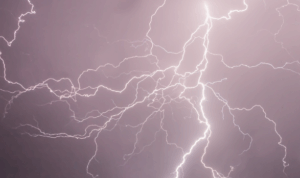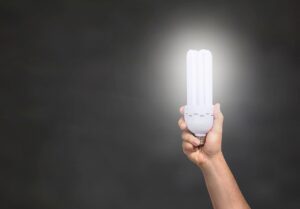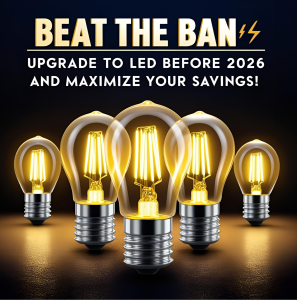Having spent the last six-plus years designing and installing solar PV and other renewable energy systems I often forget that the vast majority of my friends or people that I meet have no idea about what’s actually involved in having solar panels installed on your roof. I am reminded of this when I talk about a particular job with a friend and their eyes start to glaze over and I know I have lost them. Therefore, since one of our main goals is to help people better understand the technology and hopefully embrace it, I thought it may be useful to provide a quick overview of what’s involved in having solar PV installed on your roof.
Roof Condition
One of the first things we look at is the current condition of the roof. Assuming it is an asphalt shingle roof, it is important that the roof not be in poor condition and preferably be no more than 5 or ten years old. The reason is that although a solar array will actually protect the shingles underneath it and prolong the life of those shingles, the rest of the roof may not last that long and you want to avoid having to remove the solar array more than once in order to re-shingle the roof. A properly installed solar array should last at least 25 years so it will most likely outlast your shingles.
Roof Layout
Nothing screams SOLAR like a giant expanse of unshaded rooftop with a gentle pitch facing due south. These are the dream installs. Unfortunately, homes are designed without solar in mind and we are often faced with dormers, skylights, roof vents and other obstructions forcing us to get creative in order to maximize the size of the solar array without adversely affecting the aesthetic appearance of the building. This involves looking at whether the panels are installed in portrait or landscape or a combination of both. If we determine the array will be broken up and installed on various portions of the roof we have to keep in mind the pitch and azimuth (orientation to south) of each portion of the roof as these affect the total energy production of the PV array.
Design Considerations
A solar array is made up of three main components; roof mounting hardware which secures the PV panels to your roof, solar PV panels which produce DC energy when the sun shines on them, and an inverter, which converts the DC energy to AC. The type of roof material, the layout of the roof and shading issues all have an effect on the proper design of the solar array. Mounting hardware is different for different types of roofing materials. You can mount solar panels onto asphalt shingles, slate, metal, clay and cedar shake roofs. There is special hardware for each style of roof. The position of the panels on the roof and any shading issues affects the type of inverter to use. Basically, for a grid interactive inverters (one connected to the grid) you have a choice of a micro inverter or a string inverter. A micro inverter looks after only one solar panel so you need one for each panel on your roof. They are attached directly underneath the solar panel to the mounting hardware. A string inverter looks after a series or string of solar panels and in most cases there is only one string inverter for the entire solar array. They are mounted on the side of the building, usually near the utility meter. If part of the array will be subject to shade from a tree or building feature than you are better off with a micro inverter. The same is true if the array is mounted on different parts of the roof, say the west and south portions.
The Install
A typical solar install usually has a crew of three people, two PV trained labourers and an electrician. The entire system can usually be installed in as little as a day and a half but may take up to three days or more depending on the size and complexity.
The first step is to map out the layout of the array on the roof. Once this is done a chalk line or laser is used to line up the roof attachment points to ensure they are in a straight line. On an asphalt roof, the trusses are located along the chalk line and attachment points are spaced out according to the design specifications.
The most common asphalt roof mounting systems use a lag bolt and L-foot brackets to secure rails along which the panels are attached. The lag bolt is screwed into your roof trusses and hold the L-foot brackets firmly to your roof. In every case, a roof sealant is used to (or should be) ensure the lag bolts do not allow roof leaks to form. Flashings used with this set up provide added protection.
Once the L-Feet are secured, aluminum PV rails are attached to them in rows of two, so that the solar panels can lay perpendicular to these rails. Most solar racking is made of aluminum with stainless steel bolts and nuts. This ensures long life in the harsh conditions of your roof.
Once the rails are installed then the micro inverters (if using them) are installed onto the rails. Also at this point, the grounding wires and clips are installed to make sure the array and mounting hardware are properly grounded.
Next, the solar panels are wired to the micro inverters and each other with weatherproof snap connectors that ensure a proper and safe connection. The panels are then secured to the rails using special clamps that bolt directly to the rails. The entire set up is now firmly attached to your roof and the roof load from the array is generally less than three pounds per square foot.
The final steps involve installing the proper disconnect switches, a dual meter base for the generating meter if it’s a micro FiT and checking all of the connections to ensure the system is properly wired and grounded. Once this is done, an inspector from the Electrical Safety Associations approves the install and the electrical utility comes and connects the system to the grid.
If the system is properly designed and laid out then the process is fairly straightforward and not that difficult to install. A standard solar panel takes up about twenty square feet and has a power rating of around 250 Watts so in order to roof mount 10 kW’s you would need room for about 40 panels or 800 square feet. If you are not sure how much space you have on your roof, and you are not a fan of getting up on a ladder you can do what I do to get a quick idea of available roof space. Look up your house on Google earth and use the measuring tool to get a rough estimate of the dimensions. It also provides a compass so you can see your home’s orientation to the south.
If you have any comments or questions we are happy to address them.



































